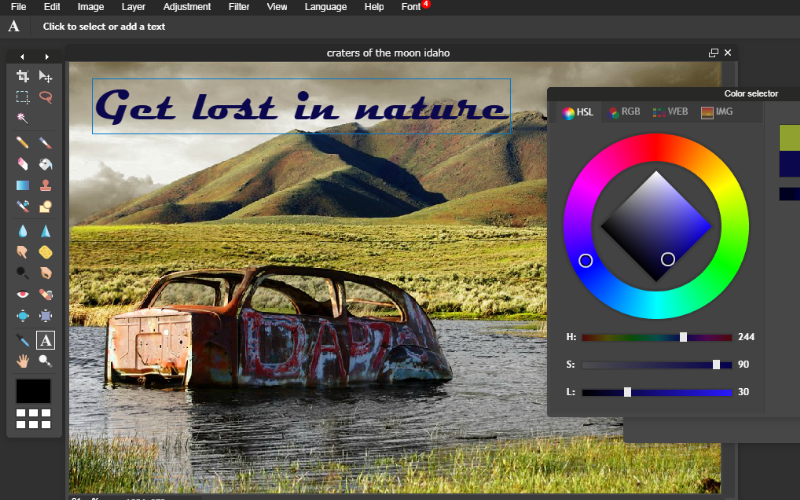

You can also create your own brush if you want. If you need to do detail work, consider using a soft brush and increase the hardness. So, choose the best brush tool for the job.

You’ll be erasing the top (duplicate) layer in specific areas with the Eraser, and the Eraser works as a brush. Now, you’re going to simply use the Eraser tool to erase the areas that you want to show up as color. Next, simply use the Desaturate option in the Adjustments menu to turn your top (duplicate) layer into a black and white image. Or, look for the Duplicate layer option in the Layers top menu. First, open your image in Pixlr Editor. Then, duplicate the background layer, which you can do by right clicking on the layer itself in your Layers toolbar. The general idea is to double up your layers and then erase part of one layer so that the bottom layer shines through. Images that begin as black-and-white images cannot be turned into full-color color images in Pixlr Editor.) This process requires you to begin with a color image this isn’t about adding color to a greyscale image. (One thing to note before you jump in: This article is about how to take a color image and playing with areas of black and white and color in combination. To distinguish between the two processes, we generally think of the more advanced Pixlr Editor process as one of “selective color.”

Pixlr Express has a Color Splash option that makes it easy to transform a photo into black and white with areas of color shining through, but you can do this in a more thorough and detailed way in Pixlr Editor.


 0 kommentar(er)
0 kommentar(er)
